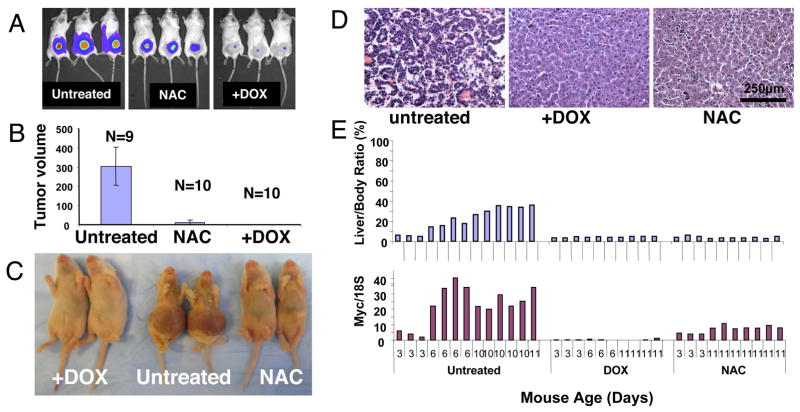Figure 1.
A. Representative human P493 B cell tumors with tetracycline repressible MYC marked with luciferase were imaged via a Xenogen instrument at day 10. Animals received normal water (Untreated) or water containing 40 mM N-acetylcysteine (NAC) or 0.01% (w/v) doxycycline (+DOX). B. Tumor volumes (Mean ±SD) measured by caliper at 2 weeks of a cohort of animals, including ones shown in 1A. Ten animals treated with both NAC and DOX displayed no tumors (data not shown). C. Representative MYC-inducible neonatal hepatocellular carcinomas in the absence of doxycycline (Untreated) are evident through gross hepatomegaly, which was not observed in either doxycycline (+DOX) or NAC treated 11 day-old animals. D. Representative hematoxylin and eosin stained histological sections of livers from untreated, DOX or NAC treated 8-day old neonates (originally 20x magnification). E. At least 10 animals in each untreated, doxycycline (DOX) or NAC treated groups are shown with the corresponding liver to body mass ratio (upper panel) or Myc mRNA level (lower panel). Mouse age is indicated in the bottom of the lower panel.

